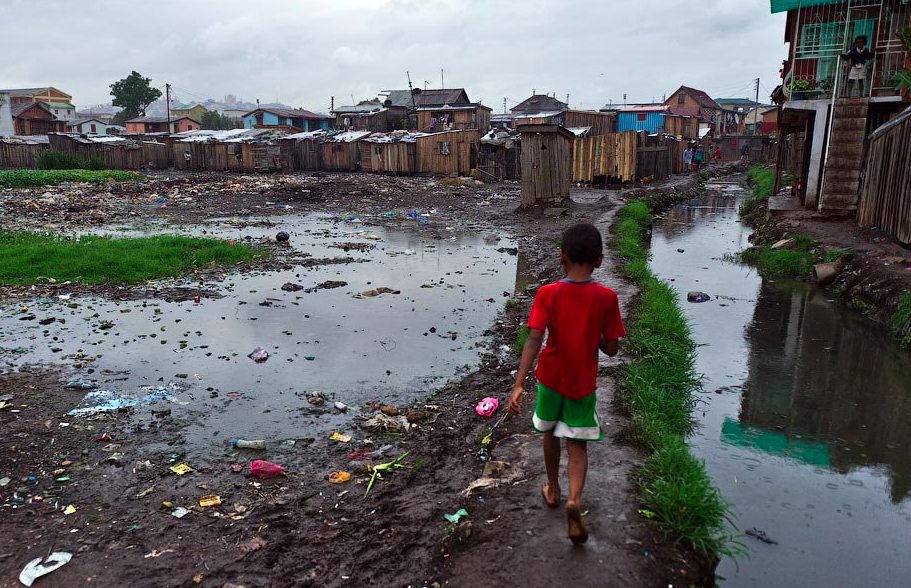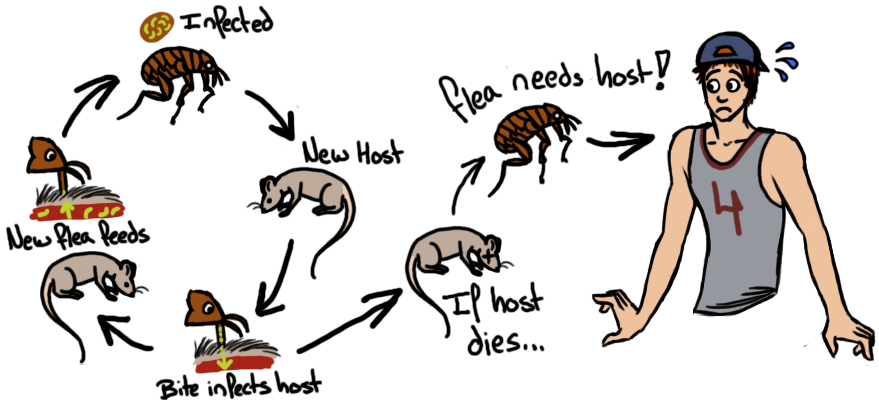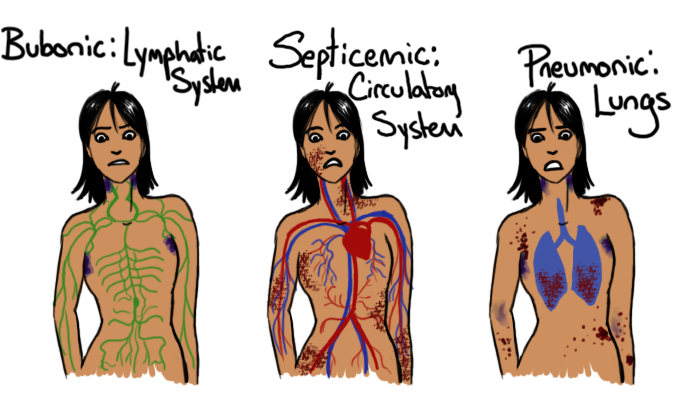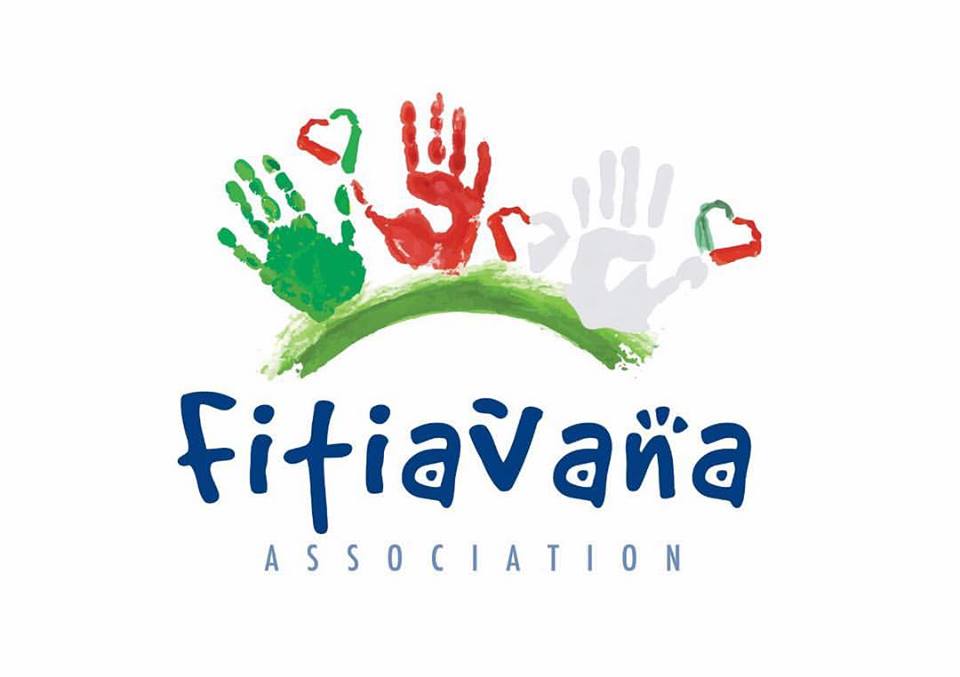Plague Outbreak in Madagascar
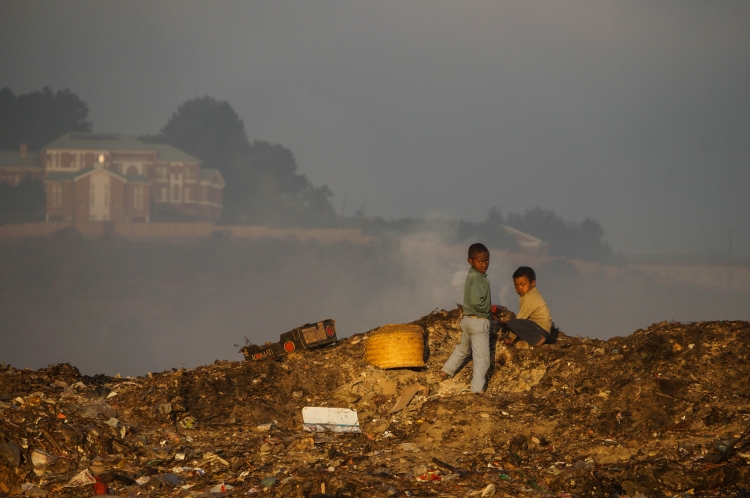
“The Triumph of Death”
We all probably remember learning about the Black Death, the infamous medieval bacterial infection that swept through Asia and Europe in the late 1340s and killed more than 25 million people. Not many people realize that this horror story of the past is still very present in the 21st century. In 2003, more than 2,100 human cases of plague and 180 deaths were recorded, nearly all in Africa. This year a rapid and deadly outbreak of the plague in Madagascar has killed more than 54 people and infected more than 500 people. The plague has been endemic in Madagascar since 1980 with more than 600 cases each year. However, this year, the outbreak is already spreading more rapidly than in previous years, and has already spread to 20 districts in 10 different regions in just three months.
How Is the Plague Triggered
The plague is triggered by the Yersinia petis bacteria, which is transmittable from animals to humans. People can become infected from being bitten by fleas, coming in contact with infected rodents, and having direct contact with other infected people.
Types of Plague
There are three major types of plague: bubonic, septicaemic, and pneumonic. Pneumonic plague, the most fatal and contagious form of the virus, is spread person-to-person via cough droplet transmission. If it is not treated correctly and quickly, it can be lethal within 24 hours. Bubonic plague is spread through fleas and rodents, and from exposure to body fluids from a dead infected animal. With this type of infection, the bacteria enters through the skin through a flea bite and causes swelling to the lymph node. Lastly, septicaemic plague is spread through the bloodstream, usually from a flea bite or if the bacterium enters the person through an open cut.
Symptoms of the Plague
Symptoms of the plague include:
- flu-like fever
- chills
- body aches
- nausea
- vomiting
- swelling of the lymph nodes in the groin, neck, and/or armpits
Why is the Plague endemic to Madagascar?
Madagascar is considered to be one of the poorest countries in the world, with 70 percent of the population living under the poverty line since 2017. This gap has only widened in recent years because of political instability and corruption. With poverty comes the conditions ample for the proliferation of disease. Antananarivo, the capital of Madagascar, is known for its lack of sanitation, clean water, basic hygiene, and health facilities making it a city-sized petri dish for the bacteria.
International NGOs to the Rescue
The World Health Organization has released $1.5 million in emergency funding to help Madagascar, and sent 1.2 million doses of antibiotics to treat and prevent the plague from spreading. This will allow WHO to treat 105,000 people who have been exposed and infected by the plague.
Fitiavana, a Local Charity
Madagascar is my native country, so this plight is close to my heart. In 2012, a group of friends and I founded an non-profit called Fitiavana to raise awareness in local and international communities about the ongoing situation in Madagascar. In Malagasy, Fitiavana means love, affection and compassion, which is exactly what we as citizens of the country try to promote, share, and exchange with the local population. Our initial goal was to raise awareness and collect enough funds to organize events such as sports tournaments and Christmas parties in which more than 3,000 children participated. We collaborated with re-education centers where we provided them with essential supplies such as medicine, soaps, blankets, mattresses, and food.
We also organized soccer games with the “children jails,” which are actually juvenile re-education centers, where individuals from our community volunteered to play with them to integrate the kids back in a community lifestyle. Fitiavana also collaborated with Made4aWoman in which uniforms for more than 500 children were produced for villages outside of Antananarivo, such as Manandriana. We also went to the slum areas in Antananarivo where we provided families with basic home essentials. Our association puts a great emphasis on the importance of exchanging life values with children from both orphanages and hospitals through teaching and learning of songs, and games in French and Malagasy. Lastly, our main goal was to bring happiness and a more unified community in a country like Madagascar that is culturally and ethnically diverse (e.g. Indians, Chinese, French, etc).
Image Credit: Fitiavana/ Eileen AkbaralyFitiavana’s Call for Action
We believe that it is also our responsibility to help and give back to our country. Therefore, we have been very active in collecting funds for those who are infected or could be infected by the plague. For this reason Fitiavana has been – and still is – collaborating with international NGO’s such as The World Health Organization (WHO) and local NGO’s such as “Ecole des Sourds et Muets” and Made4aWoman. Together we hope to work on prevention, which will have a greater long-term effect. Our plan is to focus on disinfecting schools, orphanages, and their neighboring environment.
1: Sensitize the population about the plague: We have focused on six areas of the city where we’ve worked in the past. The reason why we have chosen these areas is because we already have a strong relationship with community members there who are responsible for orphanages; therefore we believe we can trust them with the long-term prevention of the plague. With the contribution of the WHO we will distribute flyers on the importance of hygiene throughout the orphanages. We will also collaborate with local volunteers with whom we will create entertaining ways of engaging the kids to be more hygienic.
2. Dis-insectisation and de-ratting the plague: With the help of local volunteers throughout the districts, we will disinfect and work on stopping the plague from contaminating orphanages and their neighborhoods. We will also provide basic essentials such as rice and hygenie products for the volunteers in exchange of their help. The dis-insectisation and de-ratting will occur every week for one month with the collaboration of the Augias Societe. Then, depending on the need and the results, we’ll decide how much longer to continue disinfecting the neighborhoods and de-ratting them.
3. Protection of our Volunteers: Fitiavana wants to assure the security of the volunteers therefore we have contacted a sustainability-driven Cambodian based start-up called MustAir Pollution Mask which manufactures protective masks that last over a year with disposable filters that trap 95% of bacteria. These are the most effective filters used in Europe. MustAir’s sustainability mission is to plant a tree for every mask they sell, which allows Fitiavana to be part of a greater mission. We will also distribute uniforms, gloves, and boots to the volunteers for their utmost protection.
Fitiavana is still looking for help, so anyone interested in this cause can please follow this link to get involved! We accept monetary donations as well as donations of uniforms, gloves, and masks and supplies. The Fitiavana association will travel to Madagascar at the end of October to follow up with our prevention plans. We would like to thank anybody reading this and interested in collaborating with us!
You can find us through and follow us on our Facebook page Fitiavana, Twitter account Fitiavanamdg, Instagram account: Fitiavanamdg, and or email address fitiavana.mdg@gmail.com
Image Credit: Fitiavana / Eileen Akbaraly#TogetherforMadagascar

